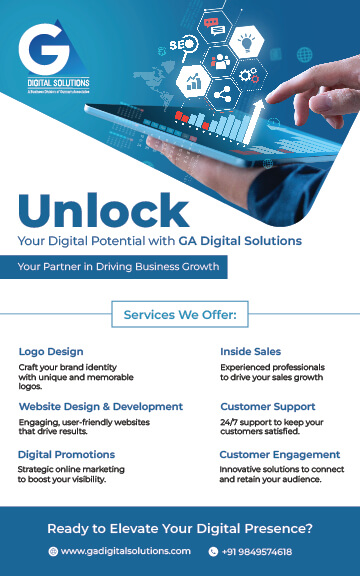
Differences Between Organic and Paid Digital Marketing
In the vast and ever-evolving realm of digital marketing, businesses are presented with a plethora of strategies to enhance their online presence and reach their target audience. Businesses grapple with the question: What is the difference between organic and paid social media marketing? Moreover, the perennial debate persists: Which is better—organic or paid marketing? In this article, we'll delve into the intricacies of organic and paid digital marketing, dissecting their differences, advantages, and when to leverage each for optimal results.
Organic Digital Marketing: The Art of Natural GrowthDefining Organic Digital Marketing
Organic digital marketing revolves around strategies that aim to naturally grow a brand's online presence without direct financial investments. It's the art of utilizing content, search engine optimization (SEO), and social media to attract, engage, and retain an audience.
Key Components of Organic Digital MarketingContent Marketing: Creating and distributing valuable, relevant content to attract and engage a target audience. This includes blog posts, articles, videos, and other forms of content. Search Engine Optimization (SEO): Optimizing web content to rank higher in search engine results organically. This involves keyword research, on-page optimization, and creating high-quality, shareable content. Social Media Presence: Building and maintaining a presence on social media platforms to connect with the audience, share content, and foster engagement. Email Marketing: Nurturing leads and maintaining customer relationships through targeted and personalized email campaigns.
Advantages of Organic Digital MarketingrSustainable Growth: Organic strategies focus on building a strong foundation over time, leading to sustainable growth. Cost-Effectiveness: While it requires time and effort, organic marketing doesn't involve direct costs for placement or ad spend. Authenticity and Trust: Building an organic audience fosters authenticity and trust, as audiences often perceive organic content as more genuine.
Paid Digital Marketing: The Accelerator for Instant Impact Defining Paid Digital MarketingPaid digital marketing, on the other hand, involves investing money in various digital channels to promote products, services, or content. It provides a faster route to visibility and allows businesses to target specific demographics.
Key Components of Paid Digital MarketingPay-Per-Click (PPC) Advertising: Placing ads on search engines or websites and paying a fee each time a user clicks on the ad. Google Ads is a common platform for PPC advertising. Social Media Advertising: Running targeted ads on social media platforms to reach specific demographics. This includes Facebook Ads, Instagram Ads, and LinkedIn Ads. Display Advertising: Placing visual ads on websites, apps, or social media platforms to increase brand visibility. Influencer Marketing: Collaborating with influencers who have a significant following to promote products or services.
Advantages of Paid Digital MarketingInstant Visibility: Paid strategies provide immediate visibility, making them ideal for time-sensitive campaigns or promotions. Targeted Reach: Ad platforms allow precise targeting based on demographics, interests, and online behavior, ensuring ads reach the intended audience. Scalability: Paid campaigns can be scaled up or down quickly based on budget and performance, providing flexibility. Measurable ROI: Paid campaigns offer detailed analytics, allowing businesses to measure the return on investment accurately.
When to Leverage Each ApproachOrganic Digital Marketing
Building a Foundation: Use organic strategies to build a solid foundation for your brand. Consistent content creation and SEO efforts lay the groundwork for long-term success. Establishing Trust: Organic methods are excellent for establishing trust and authenticity. A robust online presence through organic channels contributes to a positive brand image. Limited Budget: If budget constraints are a primary concern, starting with organic strategies can be an effective way to gradually grow without substantial financial investments.
Organic Digital MarketingBuilding a Foundation: Use organic strategies to build a solid foundation for your brand. Consistent content creation and SEO efforts lay the groundwork for long-term success. Establishing Trust: Organic methods are excellent for establishing trust and authenticity. A robust online presence through organic channels contributes to a positive brand image. Limited Budget: If budget constraints are a primary concern, starting with organic strategies can be an effective way to gradually grow without substantial financial investments.
Paid Digital MarketingPromotional Campaigns: Paid marketing is effective for time-sensitive promotions, product launches, or events where instant visibility is crucial. Targeted Advertising: When precision in targeting specific demographics is essential, paid advertising allows for granular audience selection. Quick Results: If immediate results are required, such as in a competitive market, paid strategies offer a faster route to visibility and customer acquisition.
Balancing Organic and Paid Strategies:The most effective digital marketing strategies often involve a harmonious balance of organic and paid approaches. While organic efforts lay the foundation for sustainable growth and authenticity, paid strategies provide the acceleration needed for immediate impact and targeted reach.
Strategies for Balancing BothIntegrated Campaigns: Combine organic and paid efforts in integrated campaigns to maximize visibility and impact. Amplify Organic Content: Use paid advertising to amplify the reach of high-performing organic content, reaching a broader audience. Align Campaign Goals: Ensure that both organic and paid strategies align with overarching campaign goals to create a cohesive and comprehensive marketing approach.
Conclusion: Crafting a Holistic Digital Marketing StrategySo, what is the difference between organic and paid social media marketing? It's not merely a question but a strategic consideration that defines your journey in the digital realm. The answer lies in the delicate balance between building authentic relationships through organic efforts and leveraging the targeted firepower of paid strategies. Ready to elevate your digital presence? Partner with GA Digital Solutions for a comprehensive and tailored approach to digital success. Whether it's organic growth or precision-targeted paid strategies, we've got you covered. Contact us today and let's craft a digital strategy that aligns with your goals and propels your business to new heights.


